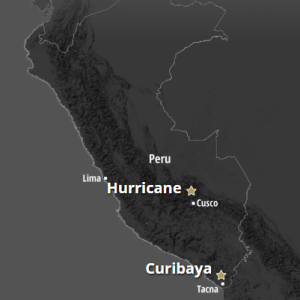
Title: Curibaya, Peru, Silver exploration
Geology: Epithermal occurence in copper porphyry belt
Client: Tier One Silver
Technology: CSAMT
Location: Curibaya, Peru
Sector: Mining
Challenges
Tier One based in Vancouver and operating exploration projects in South America required expertise and geophysical services in southern Peru. Quantec, with established facilities in Peru, were able to mobilise relatively quickly and apply local knowledge of ground conditions to assure quality data was collected for interpretation. The use of CSAMT provides a cost effective means to image to depths of 500 m and more.
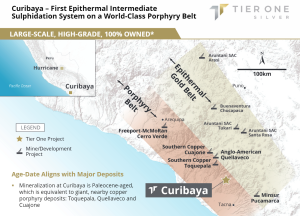
Solutions
Tier One Silver completed a 42.7-line km Controlled-Source-Audio-Frequency Magnetotelluric (CSAMT) geophysical survey over the central portion of the Curibaya project in late 2022 to provide moderate to deep resistivity imaging across a prospective portion of the property. CSAMT is used as an exploration tool to identify deeply rooted resistive and conductive features that may correlate to feeder and breccia structures, and/or zones of silicification and clay alteration, possibly related to porphyry copper targets. The project took 27 days to complete.
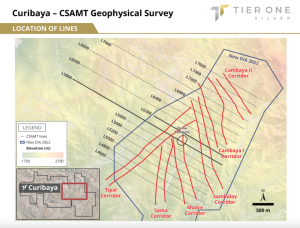
Highlights
The CSAMT survey generally tested the subsurface to 500m depth.
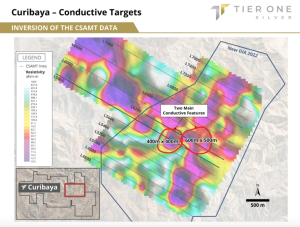
An inversion of the CSAMT data outlines two main conductive features.
- CSAMT identifies two sub-vertical, low resistivity anomalies (400 m x 400 m and 600 m x 500 m) that are interpreted to be associated with a large-scale hydrothermal alteration system
- Anomalies correlate with areas of multiphase alteration systems, including:
- Advanced argillic alteration
- Skarn and hornfels
- Sericite – phengite – muscovite
- Anomalies correlate with elevated bismuth, tellurium, selenium and copper values in rock samples
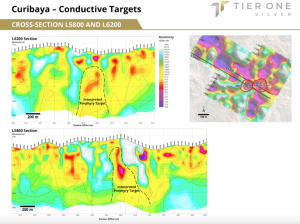
Both the high conductivity and low resistivity features are sub-vertical and located under important alteration features such as an advanced argillic lithocap, a skarn and hornfels area and a white mica alteration area. Additionally, these conductive anomalies are geochemically anomalous in bismuth, tellurium, selenium and copper. The hydrothermal alteration present in the upper part of the system and the geophysical features are consistent with buried porphyry systems.


